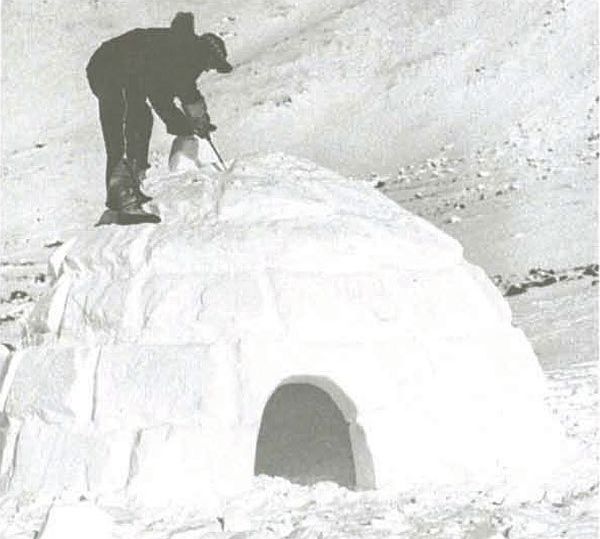Igloo
Featured in the first issue of Fine Homebuilding, this igloo was built only as temporary shelter from the intense cold the Inuit people encountered on hunting expeditions.

Tookillkee Tiquktak was born into a time of transition. He remembers cutting snow blocks with a walrus tusk knife. Today, the Inuit people use carpenter saws (photo A) and butcher knives, but they build igloos only as temporary shelters from the intense cold they en· counter on hunting expeditions: The art has been adapted, not lost. The only prerequisite for building the igloo was snow, well packed and neither wet nor icy. Such snow would support a man’s weight and could be cut easily with a saw. The size of the blocks was arbitrary; each of the blocks pictured here measured 36 in. by 20 in. by 7 in., and weighed 20 pounds. Having first marked the circle with his foot, Tookillkee placed the first twelve blocks.
Next, he cut diagonally through the face of one block and extended the incline upward around the circle of blocks. The joining sides of the blocks were beveled to facilitate the inward curve. Once in place, the bottom and joining sides of the blocks were trimmed and pressed firmly into place. The key blocks rested easily on top, but shaping them to fit was a difficult job. The soft, outside surface of the igloo lent itself well to patching seams and cracks. Sliced off, the snow of the rough, protruding edges served as filler. Tookillkee cut a slightly off-center hole and set the prepared chimney on top of it. The chimney allowed trapped heat (which would otherwise cause a cave-in) to escape.
The chimney and chimney hole were set at an angle so that
melting snow would run along the inside wall of the igloo, rather than dripping straight down. A piece of translucent ice, cut from the sea, made a window. After four hours the main igloo was built, and Tookillkee announced that he would make a porch the next day. The porch, a smaller igloo, rose much faster.
For more photos and details on this igloo, click the View PDF button below.

























